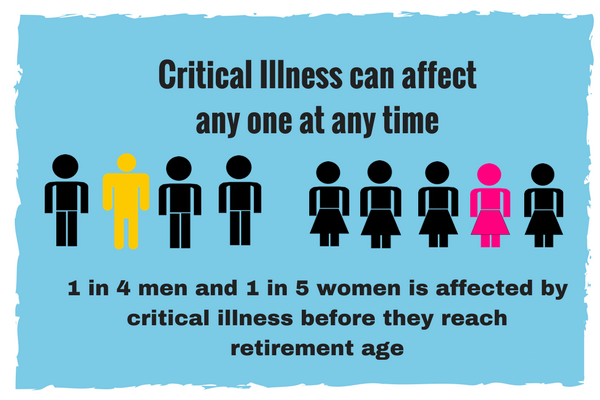Contents:


Debtors are generally paying their debts on time, the velocity of the money supply is high, and investment is high. This process continues as long as economic conditions are favorable for expansion. The demand is the relationship between price and quantity demanded–at any and every given price, how many jeans will people buy? A demand curve is a graph that shows the quantity demanded at each price.
We can see from the chart above that a decrease in the price of a complementary good would increase the quantity demanded of high-quality organic bread. The demand schedule shows exactly how many units of a good or service will be purchased at various price points. In this lesson summary review and remind yourself of the key terms, graphs, and calculations used in analyzing the demand for the good.
- The demand curve generally slopes down from left to right, due to the law of demand while the quantity demanded drops as the price rises for the majority of goods.
- The opposite will be true in industries where decreasing returns to scale prevail.
- The price of milk, a key input for cheese production, rises so that the supply decreases by 80 pounds at every price.
- The demand curve shows the quantities of a particular good or service that buyers will be willing and able to purchase at each price during a specified period.
- The demand schedule shows exactly how many units of a good or service will be purchased at various price points.
It is important to examine each of them individually, yet, as a part of the whole, in order to be able to measure and understand them. Any information contained within this essay is intended for educational purposes only. It should not be treated as authoritative or accurate when considering investments or other financial products. Is plotted on the vertical axis while the quantity is plotted on the horizontal axis.
Shifting the Curve
As the price falls to the new equilibrium level, the quantity of coffee demanded increases to 30 million pounds of coffee per month. Notice that the demand curve does not shift; rather, there is movement along the demand curve. Panel of Figure 3.10 “Changes in Demand and Supply” shows that a decrease in demand shifts the demand curve to the left. As the price falls to the new equilibrium level, the quantity supplied decreases to 20 million pounds of coffee per month. A demand curve is a graphic display of the change in demand of a good resulting from a change in price in a given time period.
If the shift to the left of the supply curve is greater than that of the demand curve, the equilibrium price will be higher than it was before, as shown in Panel . In this case, the new equilibrium price rises to $7 per pound. In Panel , since both curves shift to the left by the same amount, equilibrium price does not change; it remains $6 per pound. For example, all three panels of Figure 3.11 “Simultaneous Decreases in Demand and Supply” show a decrease in demand for coffee and a simultaneous decrease in the supply of coffee . Whether the equilibrium price is higher, lower, or unchanged depends on the extent to which each curve shifts. An increase in the supply of coffee shifts the supply curve to the right, as shown in Panel of Figure 3.10 “Changes in Demand and Supply”.

In other words, the higher the price, the lower the quantity demanded. If a factor besides price or quantity changes, a new demand curve needs to be drawn. For example, say that the population of an area explodes, increasing the number of mouths to feed.
Principles of Economics
Firms, in turn, use the payments they receive from households to pay for their factors of production. This simplified circular flow model shows flows of spending between households and firms through product and factor markets. The inner arrows show goods and services flowing from firms to households and factors of production flowing from households to firms. The outer flows show the payments for goods, services, and factors of production.
The total number of units purchased at that price is called the quantity demanded. An increase in the price of a good or service almost always decreases the quantity demanded of that good or service. Conversely, a decrease in price will increase the quantity demanded. Supply and demand rise and fall until an equilibrium price is reached. For example, suppose a luxury car company sets the price of its new car model at $200,000. While the initial demand may be high, due to the company hyping and creating buzz for the car, most consumers are not willing to spend $200,000 for an auto.
Types of Elasticity of Demand
The demand curve generally slopes downward from left to right, illustrating that as the price of a good rises, the demand for it falls. However, there are exceptions to the rule—for Giffen goods and Veblen goods, for example. In both cases, rising prices tend to accompany a rise in demand, leading to a demand curve that rises from left to right.
If I understood the article right, when the price of gasoline rises, there is no shift of the demand or supply curves. Let’s start thinking about changes in equilibrium price and quantity by imagining a single event has happened. It might be an event that affects demand—like a change in income, population, tastes, prices of substitutes or complements, or expectations about future prices. Or, it might be an event that affects supply—like a change in natural conditions, input prices, technology, or government policies that affect production.
A change in demand and a change in quantity demanded are not the same thing. Demand changes only when one of the determinants of demand change . For instance, rising consumer incomes will increase demand for new cars, a normal good, which would shift the entire demand curve to the right. More cars will be demanded at every price when demand increases. It’s also important to keep in mind that economic events that affect equilibrium price and quantity may seem to cause immediate change when examining them using the four-step analysis. As a practical matter, however, prices and quantities often do not zoom straight to equilibrium.
‘People will suffer and will die’: Emergency doctor says some health triage has begun – Calgary Herald
‘People will suffer and will die’: Emergency doctor says some health triage has begun.
Posted: Fri, 24 Sep 2021 07:00:00 GMT [source]
A a demand curve which drops in stages is called in the price of a good or service causes a change in the quantity demanded—a movement along the demand curve. In the case of coffee, demand might fall as a result of events such as a reduction in population, a reduction in the price of tea, or a change in preferences. Define the quantity demanded of a good or service and illustrate it using a demand schedule and a demand curve. A surplus exists if the quantity of a good or service supplied exceeds the quantity demanded at the current price; it causes downward pressure on price. A shortage exists if the quantity of a good or service demanded exceeds the quantity supplied at the current price; it causes upward pressure on price. Our model is called a circular flow model because households use the income they receive from their supply of factors of production to buy goods and services from firms.
Do not necessarily indicate periodic business cycles but imply cyclical responses to shocks via multipliers. The extent of these fluctuations depends on the levels of investment, for that determines the level of aggregate output. I would like to understand total revenue, what is the essence of total revenue, total expenditure. And I`d beter know about price, enterprise.Well learning economics is so important for me. If you draw any line on a graph, that line represents a relationship between the variable on the x axis and the variable on the y -axis. The line we draw tells us what the relationship is between those two qiantieis.
A combined example: the US Postal Service
At point B, 30 million pounds of coffee per month are demanded at a price of $5 per pound. Is a table that shows the quantities of a good or service demanded at different prices during a particular period, all other things unchanged. To introduce the concept of a demand schedule, let us consider the demand for coffee in the United States. We will ignore differences among types of coffee beans and roasts, and speak simply of coffee.
- When the price increases, people will still purchase roughly the same amount of goods or services as they did before the increase because their needs stay the same.
- This simplified circular flow model shows flows of spending between households and firms through product and factor markets.
- Draw a demand and supply model representing the situation before the economic event took place.
- Typically, as the price of a product increases, the quantity supplied also increases.
- Any information contained within this essay is intended for educational purposes only.
The result is a shift in demand from the original curve D1 to D3. The quantity of coffee demanded at a price of $6 per pound falls from 25 million pounds per month to 15 million pounds per month (point A″). Note, again, that a change in quantity demanded, ceteris paribus, refers to a movement along the demand curve, while a change in demand refers to a shift in the demand curve. Step 2 can be the most difficult step; the problem is to decide which curve to shift.
The important conclusion from this study can be derived as when we try to maximize the welfare effects of production we have to maximize real income formation. Maximizing productivity leads to a suboptimum, i.e. to losses of incomes. For example, when a jobless person obtains a job in market production we may assume it is a low productivity job. As a result average productivity decreases but the real income per capita increases. This example reveals the difficulty to interpret the total productivity change correctly.
Since a Giffen good does not have easily available substitutes, the income effect dominates the substitution effect. A decrease in family income will cause the demand curve to shift to the left if DVD rentals are a normal good but to the right if DVD rentals are an inferior good. The latter may be the case for some families, since staying at home and watching DVDs is a cheaper form of entertainment than taking the family to the movies.
22 Best Free Sports Streaming Sites (Updated: May 2023) – Fire Stick Tricks
22 Best Free Sports Streaming Sites (Updated: May .
Posted: Mon, 01 May 2023 07:00:00 GMT [source]
As incomes rise, for example, people tend to consume more fresh fruit but less canned fruit. Holds that, for virtually all goods and services, a higher price leads to a reduction in quantity demanded and a lower price leads to an increase in quantity demanded. If the supply curve shifted more, then the equilibrium quantity of DVD rentals will fall [Panel ].
Typically, as the price rises, the demand falls; as a result, the curve slopes down from left to right. A supply curve is a graphic representation of the correlation between the cost of a good or service and the quantity supplied for a given time period. Typically, as the price of a product increases, the quantity supplied also increases. A change in one of the variables held constant in any model of demand and supply will create a change in demand or supply.
As a result, the sales of the new model quickly fall, creating anoversupply and driving down demand for the car. In response, the company reduces the price of the car to $150,000 to balance the supply and the demand for the car to ultimately reach an equilibrium price. It aims to answer basic questions about how badly people want things, and how demand is impacted by income levels and satisfaction . Based on the perceived utility of goods and services by consumers, companies adjust the supply available and the prices charged. A demand curve shows graphically the quantities of a good or service demanded at different prices during a particular period, all other things unchanged. Many people who drink coffee enjoy dunking doughnuts in their coffee; the lower price of doughnuts might therefore increase the demand for coffee, shifting the demand curve for coffee to the right.
An increase in demand would be an increase in a product as a whole and an increase in quantity demanded is the amount someone would buy at a time. You are confusing movement along a curve with a shift in the curve. And confusing change in supply with change in quantity supplied. The city eliminates a tax that it had been placing on all local entertainment businesses. The result is that the quantity supplied of movies at any given price increases by 10%. Use the four-step process to analyze the impact of a reduction in tariffs on imports of iPods on the equilibrium price and quantity of Sony Walkman-type products.
At that point, there will be no tendency for price to fall further. The prices of most goods and services adjust quickly, eliminating the surplus. Later on, we will discuss some markets in which adjustment of price to equilibrium may occur only very slowly or not at all. Demand curves are used to determine the relationship between price and quantity, and follow the law of demand, which states that the quantity demanded will decrease as the price increases. In addition, demand curves are commonly combined with supply curves to determine the equilibrium price and equilibrium quantity of the market. A demand curve represents the relationship between the price of a good or service and the quantity demanded for a given period of time.
Energy Recovery, Inc. (NASDAQ:ERII) Q1 2023 Earnings Call … – Insider Monkey
Energy Recovery, Inc. (NASDAQ:ERII) Q1 2023 Earnings Call ….
Posted: Thu, 04 May 2023 15:43:15 GMT [source]
With the price information and the number of slices Joel will demand at that price, it would be possible to plot an individual demand curve. So all in all, supply for walkmans stays the same, and demand for walkmans shifts twice to the left. So in the end, the final equilibrium quantity goes to the lowest points while the eq.
The payments firms make in exchange for these factors represent the incomes households earn. Thedemandcurve is a visual representation of how many units of a good or service will be bought at each possible price. It plots the relationship between quantity and price that’s been calculated on thedemand schedule, which is a table that shows exactly how many units of a good or service will be purchased at various prices. Veblen goods are those for which demand rises even as the price rises because of the exclusive nature and appeal of these products as status symbols.
The final step in a scenario where both supply and demand shift is to combine the two individual analyses to determine what happens to the equilibrium quantity and price. One way to do this is to graphically superimpose the two diagrams one on top of the other, as we’ve done below. What a buyer pays for a unit of the specific good or service is called price.
An inferior good is a good whose demand drops when people’s incomes rise; « inferior » indicates affordability, not quality. There are some exceptions to the rules that apply to the relationship that exists between prices of goods and demand. There are some exceptions to the relationship between price and demand, including Giffen goods and Veblen goods. According to the common misperceptions, price is not a determinant of demand.
